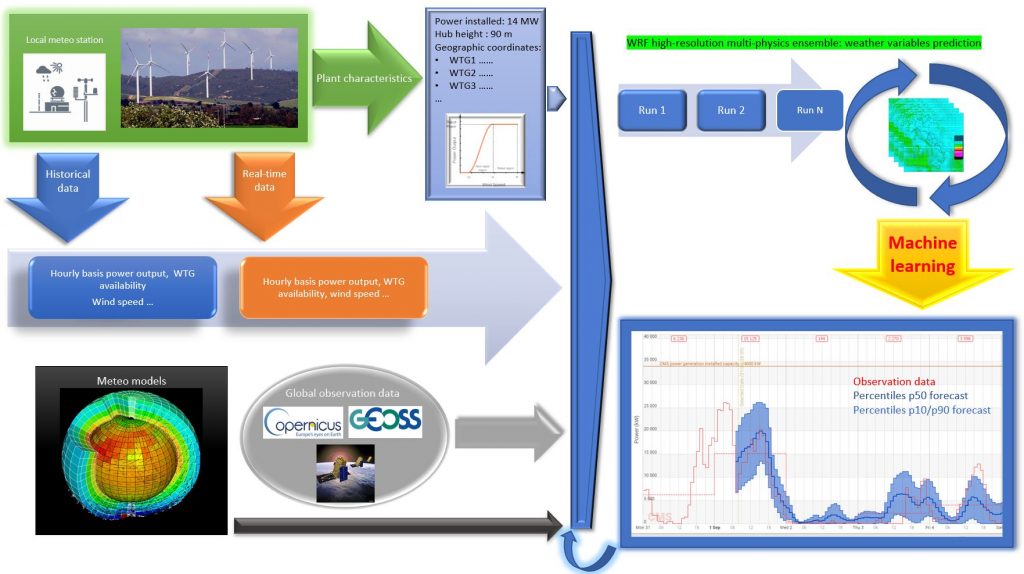Renewable-energy prediction

The European energy market is strongly interconnected with a significant interplay between the different energy sources and other important challenges on the energy trading sector. For example, a drought period can affect hydroelectric production, thereby demanding gas generation to counterbalance. Energy traders use computer software programs and other analytical tools combined with meteorological data to predict the trend of energy prices. Renewable energy production forecasting systems currently rely on an ensemble of meteorological predictions provided by global circulation models with grid spacing between 15 and 25 km with hourly-three hourly temporal resolution. Even with the adoption of ensemble approaches, large uncertainties still exist when operating forecasting systems based on predictions of meteorological variables at tenths of km’s.
To tackle the challenge of predicting renewable energy production, the EVEREST approach will enrich the output of an ensemble of meteorological simulations at cloud permitting grid spacing (2-4 km) with AI post-processing techniques, to achieve better accuracy of forecast products for the day-ahead energy market, intraday energy market, and next continuous energy trading market.